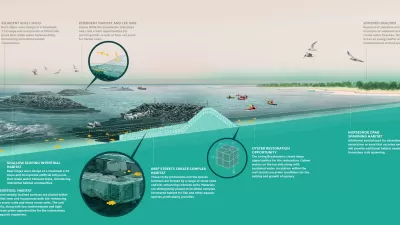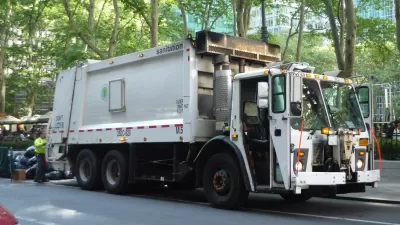Michael Kimmelman tours Fresh Kills landfill, once the world's largest garbage dump, and now a model for landfill reclamation and, unexpectedly, climate change mitigation.

For decades, Fresh Kills was a dirty word in New York's borough of Staten Island, and to many, what was once a notorious garbage dump, still is. But since its closing in 2001, the 2,200 acre site has become a model for ecological restoration - boasting the largest expanse of meadow in the region - and is, hopefully, on its way to becoming a public park. After protecting nearby neighborhoods like Travis, Bulls Head, New Springville and Arden Heights from more severe flooding during Superstorm Sandy, "it is also demonstrating the role of wetland buffers in battling rising waters," says Kimmelman.
The landfill's transformation into a public park, following the competition winning design of James Corner (designer of the High Line), has been stalled by regulatory and financial hurdles. But Kimmelman is hopeful that the area's transforming image "will help push officials to ready what is known as Freshkills Park for visitors," and repeat the success of the High Line in transforming a former industrial site into an unexpected amenity.
"Once it is opened to the public," he argues, "the park also promises to repay long-suffering Staten Island residents who endured generations of stench and anger, and more than that, to give the entire city an immense, bucolic urban playland — a 21st-century postindustrial landmark rising from mounds of 20th-century waste."
FULL STORY: Staten Island Landfill Park Proves Savior in Hurricane

Planetizen Federal Action Tracker
A weekly monitor of how Trump’s orders and actions are impacting planners and planning in America.

Maui's Vacation Rental Debate Turns Ugly
Verbal attacks, misinformation campaigns and fistfights plague a high-stakes debate to convert thousands of vacation rentals into long-term housing.

San Francisco Suspends Traffic Calming Amidst Record Deaths
Citing “a challenging fiscal landscape,” the city will cease the program on the heels of 42 traffic deaths, including 24 pedestrians.

Defunct Pittsburgh Power Plant to Become Residential Tower
A decommissioned steam heat plant will be redeveloped into almost 100 affordable housing units.

Trump Prompts Restructuring of Transportation Research Board in “Unprecedented Overreach”
The TRB has eliminated more than half of its committees including those focused on climate, equity, and cities.

Amtrak Rolls Out New Orleans to Alabama “Mardi Gras” Train
The new service will operate morning and evening departures between Mobile and New Orleans.
Urban Design for Planners 1: Software Tools
This six-course series explores essential urban design concepts using open source software and equips planners with the tools they need to participate fully in the urban design process.
Planning for Universal Design
Learn the tools for implementing Universal Design in planning regulations.
Heyer Gruel & Associates PA
JM Goldson LLC
Custer County Colorado
City of Camden Redevelopment Agency
City of Astoria
Transportation Research & Education Center (TREC) at Portland State University
Jefferson Parish Government
Camden Redevelopment Agency
City of Claremont




























